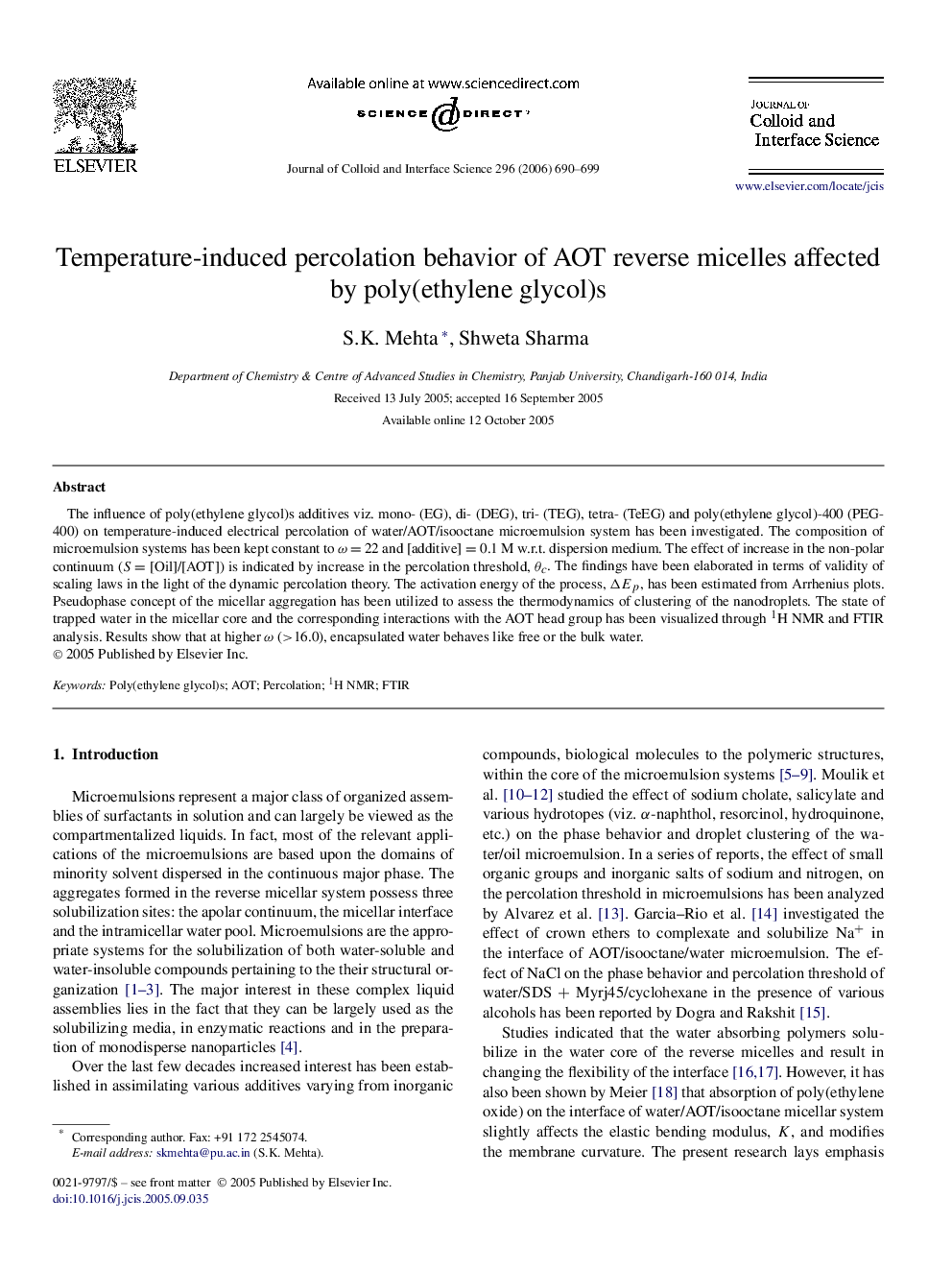| کد مقاله | کد نشریه | سال انتشار | مقاله انگلیسی | نسخه تمام متن |
|---|---|---|---|---|
| 613765 | 880727 | 2006 | 10 صفحه PDF | دانلود رایگان |

The influence of poly(ethylene glycol)s additives viz. mono- (EG), di- (DEG), tri- (TEG), tetra- (TeEG) and poly(ethylene glycol)-400 (PEG-400) on temperature-induced electrical percolation of water/AOT/isooctane microemulsion system has been investigated. The composition of microemulsion systems has been kept constant to ω=22ω=22 and [additive] = 0.1 M w.r.t. dispersion medium. The effect of increase in the non-polar continuum (S = [Oil]/[AOT]) is indicated by increase in the percolation threshold, θcθc. The findings have been elaborated in terms of validity of scaling laws in the light of the dynamic percolation theory. The activation energy of the process, ΔEpΔEp, has been estimated from Arrhenius plots. Pseudophase concept of the micellar aggregation has been utilized to assess the thermodynamics of clustering of the nanodroplets. The state of trapped water in the micellar core and the corresponding interactions with the AOT head group has been visualized through 1H NMR and FTIR analysis. Results show that at higher ω (>16.0), encapsulated water behaves like free or the bulk water.
Journal: Journal of Colloid and Interface Science - Volume 296, Issue 2, 15 April 2006, Pages 690–699